Water pump for heating: types, specifications and selection rules
Gravitational natural phenomena are not always able to provide a sufficient level of coolant circulation, especially in complex systems with several rings. To stimulate the movement of the coolant will help a water pump for heating rooms. What is this equipment like? We will consider this issue in our article.
In addition to the device and technical characteristics of the water pump, we will analyze the types, marking features. We also consider in detail the advantages of circulation equipment and the important parameters that must be considered when choosing.
The content of the article:
General structure of the water pump
The water pump is built into the heating circuit to ensure the movement of the coolant. Therefore, such systems are called heating with forced circulation.
It consists of the following basic elements:
- case with a working chamber;
- engine;
- impeller;
- air bleeder screw;
- terminal box.
The terminal box can be equipped with additional mechanical and electronic equipment designed to regulate the operation of the motor.
The simplicity of the device ensures high reliability of the pumps, thanks to which they can function effectively for about 5-10 years.
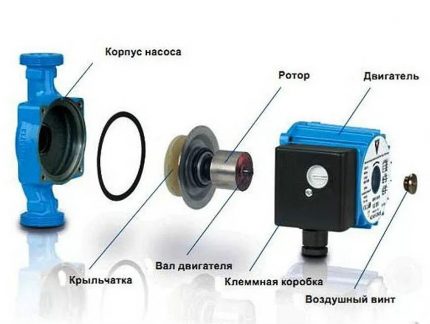
Types of pumps for heating systems
Modern circulation pumps are divided into two principal types: “dry” and “wet”. They differ somewhat in their internal structure and operation scheme, but the movement of fluid in them is still ensured by the circulation processes in the system. Some models are equipped with devices for automatic regulation of their work.
Option # 1 - dry type appliances
The design of the dry circulation pump does not imply contact of the coolant with the rotor. Its working area is separated from the motor parts by special rings.
They are made from the following types of material:
- graphite;
- ceramics;
- tungsten carbide;
- of stainless steel;
- aluminum oxide.
The principle of operation of the "dry" pump is to rotate the wheel in a coolant. The water supply opening is located in the center of the main chamber, and the outlet channel system is located on the periphery.
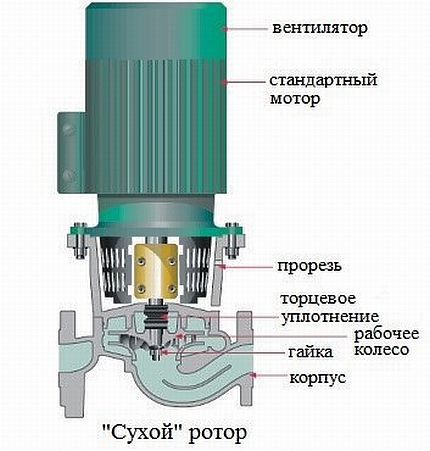
The rotation of the impeller of the functional wheel leads to the appearance of centrifugal forces that move the coolant from the center of the housing to its edges. This principle of operation of the circulation pump provides a constant movement of water through its inner chamber.
The positive features of dry type heating equipment are:
- high level of efficiency - 70-80%;
- minimum water hammer at startup;
- the possibility of horizontal and vertical arrangement of the engine;
- pumping large volumes of coolant due to high power.
Due to the combination of efficiency and noise, “dry” pumps are mainly used in heating systems of industrial, office buildings and large residential facilities.
Therefore, for devices of this kind, the following negative aspects can be distinguished:
- High noise level, not allowing them to be used in apartments.
- The need to replace the sealing discs every 2-3 years.
- High probability of the coolant flowing out in case of violation of the tightness of the working chamber.
- The need for external engine cooling.
Due to the heavy weight, such equipment is installed on the floor or suspended on brackets.
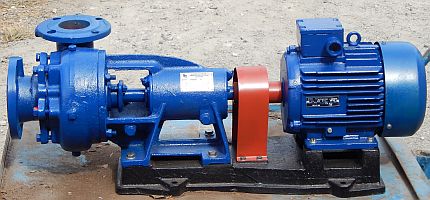
There are two options for the design of dry pumps:
- Monoblock. The engine and the metal housing of the device are combined in one design with specific mounts.
- Cantilevered. Using universal mounts, an engine of any power can be connected to the equipment case.
“Dry” circulation devices for heating systems with appropriate maintenance are more durable, so they are gradually replacing models with a wet rotor from the market.
Option # 2 - wet rotor pumps
The principle of operation of the circulating device with the wet type rotor is similar to its “dry” type counterpart: when the impeller rotates, the coolant supplied to the center moves to the periphery of the working chamber, from where it is collected in the outlet channels.
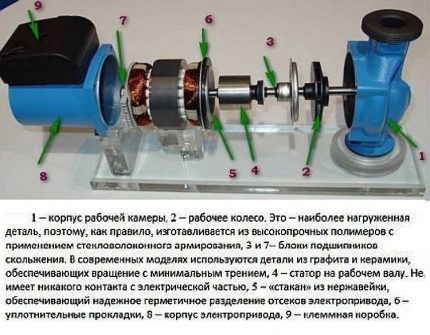
The rotor of the wet pump is in contact with the coolant, which provides cooling of the engine. Such devices should not work in dry mode, because they quickly overheat and burn out.
Component parts of equipment are usually located in one housing and make up a single design, therefore, if individual elements break down, they are not replaced, but they are bought a new pump.
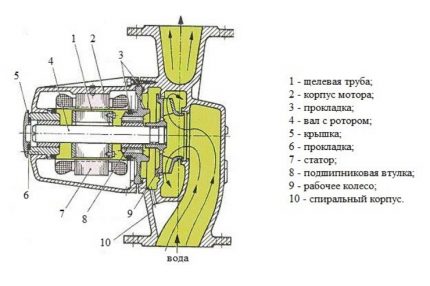
Advantages of the wet rotor unit:
- silent operation;
- compact sizes;
- low power consumption (30-50 W);
- duration of service without maintenance;
- relatively low cost;
- ease of installation.
Devices are often built directly into the design of domestic boilers, making it easier for the consumer to choose equipment when installing a heating system.
There are also disadvantages to heating devices of this type:
- design restrictions on maximum power;
- low maintainability;
- low efficiency (40-60%);
- the need for a strictly horizontal axis of the engine.
Due to the low power, the wet type of pumping machines is used mainly in heating systems of apartments and one-story houses.
The advantages of circulating devices
Until 1990, heating systems in private buildings were designed and built mainly without pumps. The coolant moved through the pipes by gravity, and its circulation was provided by convection flows of fluid when it was heated in the boiler. Currently still using systems with natural circulationalthough not so often.
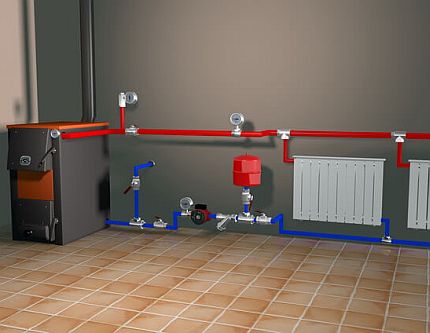
Now the movement of the coolant is carried out forcibly with the help of water pumps, which have several advantages:
- Reduced load on the boiler by reducing the temperature difference in the inlet and outlet pipes.
- Uniform distribution of heat in the rooms due to the same temperature of the coolant along the entire length of the heating rings.
- The ability to quickly control the temperature of the coolant.
- Quick heating of the heating system when starting a cold boiler.
- No need for pipelines with a slope to the boiler, providing spontaneous movement of the coolant.
- The possibility of using thin pipes, which occupy a little internal space of the apartment.
- The power of the pump allows you to pump in the heating circuit a pressure sufficient to supply the coolant up several floors.
- The use of valves on individual loops of heating networks.
- The ability to integrate the pump into the automatic control system of the boiler.
With a lot of advantages, circulating devices have two disadvantages - this is the dependence on the power supply and the additional cost of electricity.
But the disadvantages are easily compensated - the installation of a water pump allows you to save 10-20% of fuel, and the share of the cost of electricity in the total cost of heating is only 3-5%. In addition, with a frequent lack of electricity, you can install a UPS that will provide for a certain period of autonomous operation of the boiler and pump.
Features of equipment labeling
Unfortunately, there are no unified labeling requirements for circulation pumps. Manufacturers independently choose a list of technical specifications that are indicated on the device.
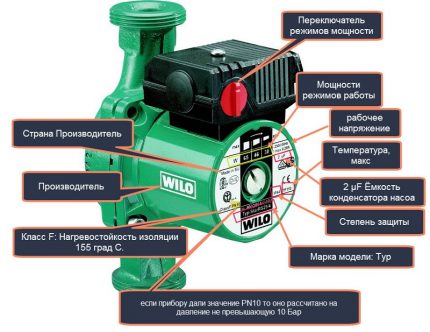
The following information is usually displayed on the front panel:
- direction of movement of the coolant;
- diameter of the connected pipes;
- maximum permissible pressure;
- manufacturer and model;
- maximum working temperature;
- degree of protection;
- power supply operating parameters;
- marks of conformity with national technical regulations.
Manufacturers may provide other information at their discretion. Detailed technical characteristics of the devices are indicated in the instruction manual.
Units vary from country to country, so the numbers on the case may be misleading. It is better to once again open the instructions, where along with the characteristics their units of measurement are also indicated.
What to look for when choosing a pump?
The selection of a separate pump for the heating circuit must be carried out taking into account many parameters.
Technical parameters of equipment
The circulation equipment has a number of characteristics that are especially important to consider when buying.
These include:
- Efficiency - the ratio of the volume of energy consumed to the useful work performed on pumping the coolant.
- Pressure - pressure difference between the outgoing and inlet openings of the pump.
- Water supply - the maximum volume of coolant pumped through the working chamber with a minimum resistance of the heating circuit.
- Power electricity consumption.
- Pipe diameter - nominal value of connected equipment.
- Maximum pressure rating (denoted by PN) in the operating circuit at 20 ° C, at which the long-term operation of the device is guaranteed under the warranty period.
This data is usually sufficient to confirm the sufficiency of the pump's technical characteristics for the parameters of the heating system.
In more detail, we examined the selection criteria in this article.
Sufficient power of the device
The choice of a specific model of circulation equipment is influenced by technical characteristics, as well as the financial capabilities of the buyer and the properties of the heating system. If you want to save, it is important that the pump power is sufficient for the normal operation of the boiler. After all, the water supply level specified in the instructions is always much higher than the actual one.
To independently determine the adequacy of the power of the device, three stages of calculations have to be carried out.
Stage # 1 - determine the performance of the pump
Determination of the required pump capacity by the formula.
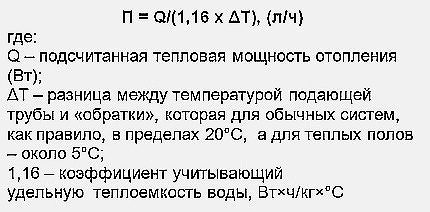
For apartments in multi-storey buildings, the heating heating power is assumed to be 75-80 W / sq. m., for houses - 100-120 W / sq. m. The temperature difference at the boiler inlet and outlet is usually 10 ° C.
It turns out that for an apartment of 60 square meters. m. there will be enough real pump performance in (80 * 60) / (1.16 * 10) = 414 (l / h).
Stage # 2 - calculate the pressure
Determining the pressure to overcome the total hydraulic resistance of the system according to the formula.
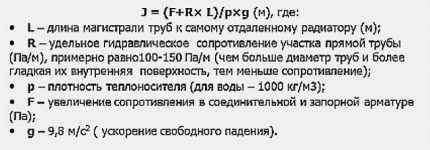
This formula requires complex calculations using reference data, so for home and apartment heating systems, you can use the simplified schedule.

According to the schedule, the pressure loss in an apartment with a pipe diameter of 20 mm will be 70 mm / m, and taking into account the length of the pipeline of 50 m - 3.5 meters. This figure should be multiplied by a factor of 1.3-2.2, taking into account the resistance of water valves.
Stage #3 - determine the power of the pump
Determination of sufficiency of pump power according to the schedule of pressure-flow rate characteristics.
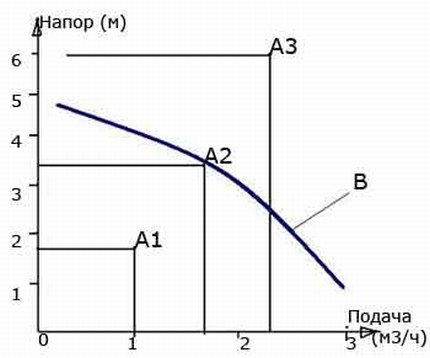
Such a schedule is indicated in the instruction manual, and it is unique for each pump model. If the intersection point of the parameters calculated above is below curve B, then the device is suitable for the heating system, but if it is higher, then not.
Detailed recommendations for the calculation of the circulation pump with specific examples, we gave in the next article.
Additional device functions
If a constant fluid movement is critical to the heating system, a pair of pumps in series in the circuit can be installed. The second engine in such a system can turn on if there is insufficient power or a breakdown of the first motor.
To automate the operation of a boiler heated by the heating circuit, pumps with thermostat and timer can be used.The built-in mechanism provides turning the engine on and off depending on the temperature of the coolant and the time of day.
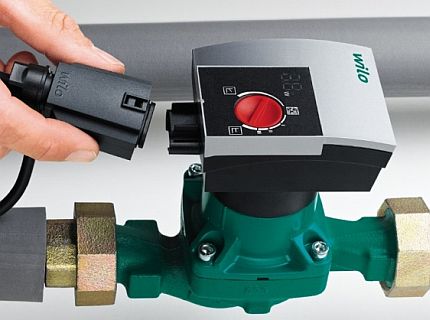
In branched heating networks, circulation pumps with a thermostat and infinitely variable impeller speed can be used. With their help, in different loops, autonomous control of the coolant speed occurs, depending on its temperature. Pumps with automation are many times more expensive and rarely used in apartments and small residential buildings.
Both standard and non-standard models are presented on the market, giving additional functionality. Rating of the best heating pumps, based on reviews from real users, we brought here.
Other nuances of choosing a pump
It is important that the equipment does not only fulfill its function, but also works for a long time without causing inconvenience to the residents of the house or apartment.
Therefore, when choosing a device, the following rules should be followed:
- Choose well-known pump manufacturers: Calpeda, Grundfos, WILO. The price of their equipment is 20-40% higher, but the probability of failure is much less.
- Take the device with characteristics that are 20-30% higher than calculated. This stock will reduce operational load and increase equipment life.
- Pay attention to the dimensions so that the pump fits in the space provided for it.
- The operation of the device should be as quiet as possible so as not to disturb the residents at night.
- No need to strive to buy a model with a power that greatly exceeds the calculated parameters. This will lead only to an excessive consumption of electricity, but also to excess noise.
- Choose a pump specifically for heating systems, because they are designed for operating temperatures up to 130-150 ° C.
- It is desirable that the device has a built-in mesh for filtering solid particles suspended in the coolant.
The performance of the equipment must necessarily correspond to the parameters of the heating system, it is impossible to save on this. In addition, you will have to pay only for a reliable manufacturer, increased security of the case and an automatic regulation system.
Most household circulating devices for heating do not require adjustment. To start them, it is enough to connect the nozzles to the pipeline and turn on the device in the electrical network. And how to properly install the pump we examined in step by step instructions.
Conclusions and useful video on the topic
How to choose a good circulation pump for heating:
DAB circulation equipment:
Comparison of two Grundfos appliances: UPS and Alpha2:
The choice of a circulation pump is best coordinated with specialists. If sellers in a store can tell the power of equipment for a standard apartment, then before buying a heating device for a country house you will have to turn to professionals for complex calculations.
It should be remembered that it is impossible to exchange it in the store after the start of operation, therefore it is better to immediately buy a suitable model.
Do you want to supplement our article with useful recommendations for choosing a heating pump? Or did you notice a discrepancy in the data presented? Write your comments in the comments section - we will take your opinion into account.
Or maybe you still have questions after reading the article? Ask them to our experts, ask for advice - we will try to help you.

 Selection of a circulation pump: device, types and rules for choosing a pump for heating
Selection of a circulation pump: device, types and rules for choosing a pump for heating 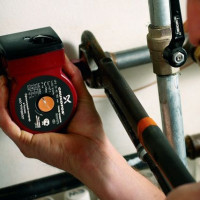 How to calculate a pump for heating: calculation examples and equipment selection rules
How to calculate a pump for heating: calculation examples and equipment selection rules  Heating elements for heating: types, principle of operation, rules for the selection of equipment
Heating elements for heating: types, principle of operation, rules for the selection of equipment 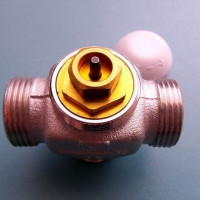 Three-way valve on the heating system: operation, selection rules, diagram and installation
Three-way valve on the heating system: operation, selection rules, diagram and installation  Circulation pump for heating: top ten models and tips for customers
Circulation pump for heating: top ten models and tips for customers 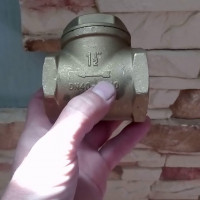 Check valve for heating: action, types, pros and cons + installation diagram
Check valve for heating: action, types, pros and cons + installation diagram  How much does it cost to connect gas to a private house: the price of organizing gas supply
How much does it cost to connect gas to a private house: the price of organizing gas supply  The best washing machines with dryer: model rating and customer tips
The best washing machines with dryer: model rating and customer tips  What is the color temperature of light and the nuances of choosing the temperature of the lamps to suit your needs
What is the color temperature of light and the nuances of choosing the temperature of the lamps to suit your needs  Replacement of a geyser in an apartment: replacement paperwork + basic norms and requirements
Replacement of a geyser in an apartment: replacement paperwork + basic norms and requirements
I am one of those who learn from their mistakes. Although, it must be admitted that limited funds forced me to buy a circulation pump simpler, cheaper, not a well-known reliable brand, but a Chinese noun.
It looks like a good, inexpensive one, it worked well for six months, without complaints, a little noisy.
And then - bam, and stopped turning off. He took it off, took it to the craftsmen, they said: “Uncle, we will clean it, but it’s better to buy a normal one, it’s in the metal, it oxidizes from contact with water and the duct and sensor get clogged.”
In general, I had to buy Grünfos, he has been working for the sixth year, I don’t even look there, he doesn’t make noise from the word at all.